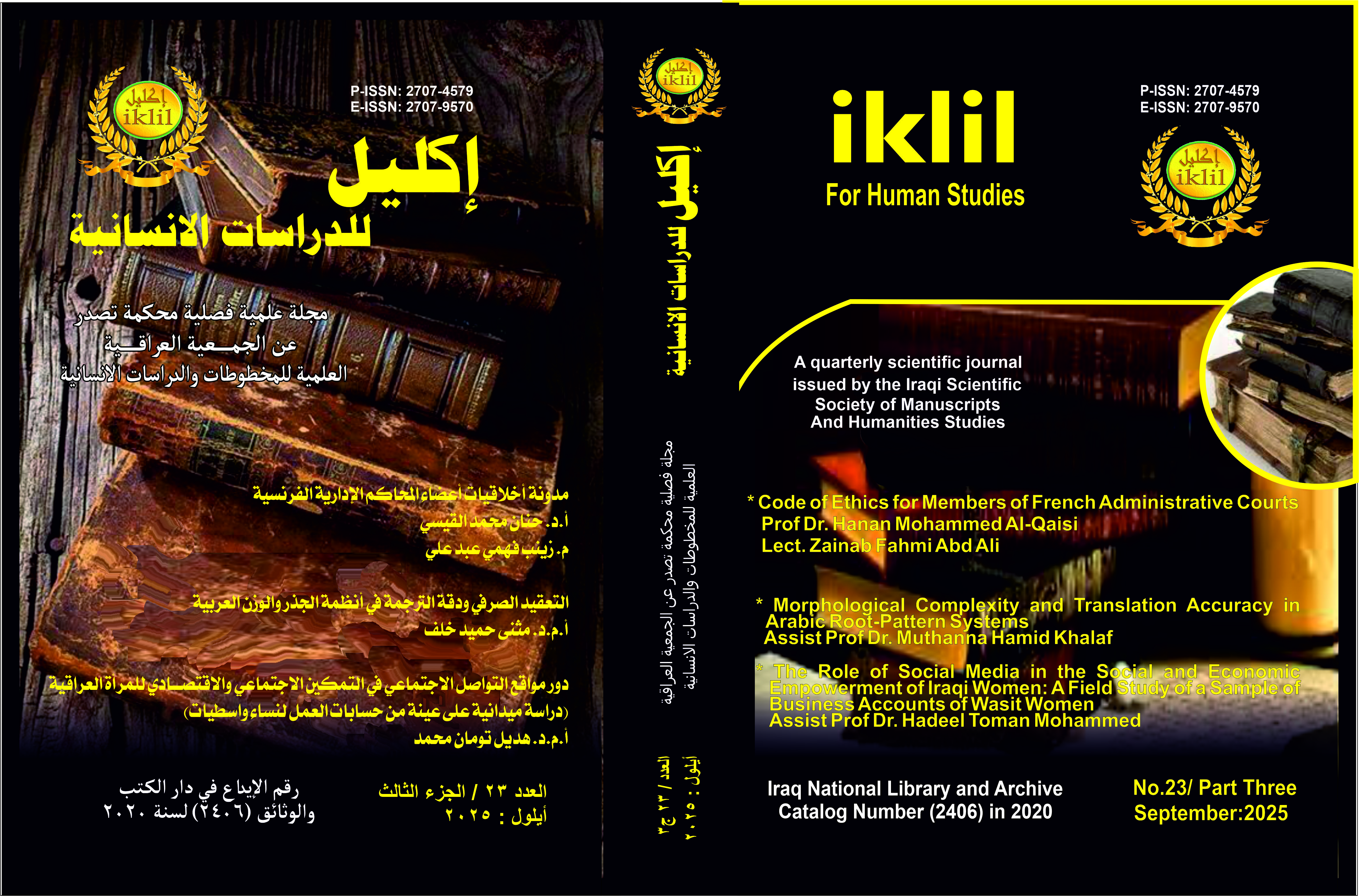Abstract
Ancient Iraqi architecture was characterized by some features that made it differ from its counterparts in the countries of the ancient Near East. This is true to urban planning, materials and method of construction, as well as the basic and secondary architectural elements used in that building in general, in addition to other internal components that include the internal divisions of buildings, which differ based on the type, function of the building and the time period to which it belongs. Perhaps one of the most important elements used in ancient Iraqi architecture is the column, which was - and still is - an important and indispensable architectural element in most buildings, regardless of the function, type and form of the building, which can be seen in many Mesopotamian buildings, taking into account some of the developments and changes which have occurred over the ages, as well as with the difference in the natural (spatial) environment, which is considered the primary influencing factor on human civilizations in general and humans in particular. Here, one of the most important factors that made Assyrian architecture partially different from its Sumerian and Babylonian counterparts becomes clear to us, as all of them were under the influence of the natural environment and what was available in it from raw materials and other auxiliary factors that affected the nature of the individual and society and reflected on the material waste of those societies in one way or another. With regard to columns and their uses in Assyrian architecture, they were undoubtedly the outcome of those accumulated developments left behind by the Sumerian and Babylonian civilizations, based on the artistic scenes revealed by archaeological excavations, as well as the architectural remains, in which it is clear that the column was used as an architectural element since prehistoric times and it continued to be used in different forms and styles. Each of them had a specific function and purpose which suited the cultural development in general and architectural development in particular, which in turn was the result of a bundle of factors, the most prominent of which was the human interaction with the natural environment.
Keywords
Architectural Elements
Architecture
Assyrian Architecture
Mesopotamia
the Column
Abstract
تميزت العمارة العراقية القديمة بعدة مميزات جعلتها تختلف عن نظيراتها في بلدان الشرق الادنى القديم، وينطبق الامر على التخطيط العمراني ومواد البناء وطريقة البناء وكذلك العناصر العمارية الاساسية والثانوية المستعملة في ذلك البناء بشكل عام، فضلاً عن المكونات الداخلية الاخرى التي تشمل التقسيمات الداخلية للمباني، والتي تختلف حسب نوع ووظيفة البناء والحقبة الزمنية التي يعود اليها. ولعل احد أهم العناصر المستعملة في العمارة العراقية القديمة هو العمود، الذي كان ولازال عنصراً عمارياً مهماً لا يمكن الاستغناء عنه في اغلب الابنية بغض النظر عن وظيفة ونوع وشكل البناء وهو ما يمكن ان نلتمسه في كثير من ابنية بلاد الرافدين، مع الاخذ بنظر الاعتبار بعض التطورات والاختلافات التي حصلت على مر العصور، وكذلك مع اختلاف البيئة الطبيعية (المكانية) التي تعد العامل المؤثر الاول على الحضارات الانسانية بشكل عام والانسان بشكل خاص، وهنا يتضح لنا احد اهم العوامل التي جعلت العمارة الاشورية تختلف جزئياً عن نظيراتها السومرية والبابلية فجميعها كانت تحت تأثير البيئة الطبيعية وما وفرته من مواد اولية وعوامل مساعدة اخرى اثرت في طبيعة الفرد والمجتمع وانعكست بشكل او باخر على المخلفات المادية لتلك المجتمعات . وفيما يخص الاعمدة واستعمالاتها في العمارة الاشورية فهي بلا شك كانت حصيلة تلك التطورات المتراكمة التي خلفتها الحضارتان السومرية والبابلية استناداً لما كشفت عنه التنقيبات الاثرية من مشاهد فنية فضلاً عن البقايا العمارية التي يتضح فيها استعمال العمود كعنصر عماري منذ عصور قبل التاريخ واستمرار استعماله بعدة اشكال وطرق مختلفة كان لكل منها وظيفة وغاية معينة تتناسب والتطور الحضاري بشكل عام والعماري بشكل خاص والذي كان حصيلة مجموعة عوامل كان أبرزها تفاعل الانسان مع البيئة الطبيعية.
Keywords
العمود. العمارة. عنصر. عماري. الاشورية
